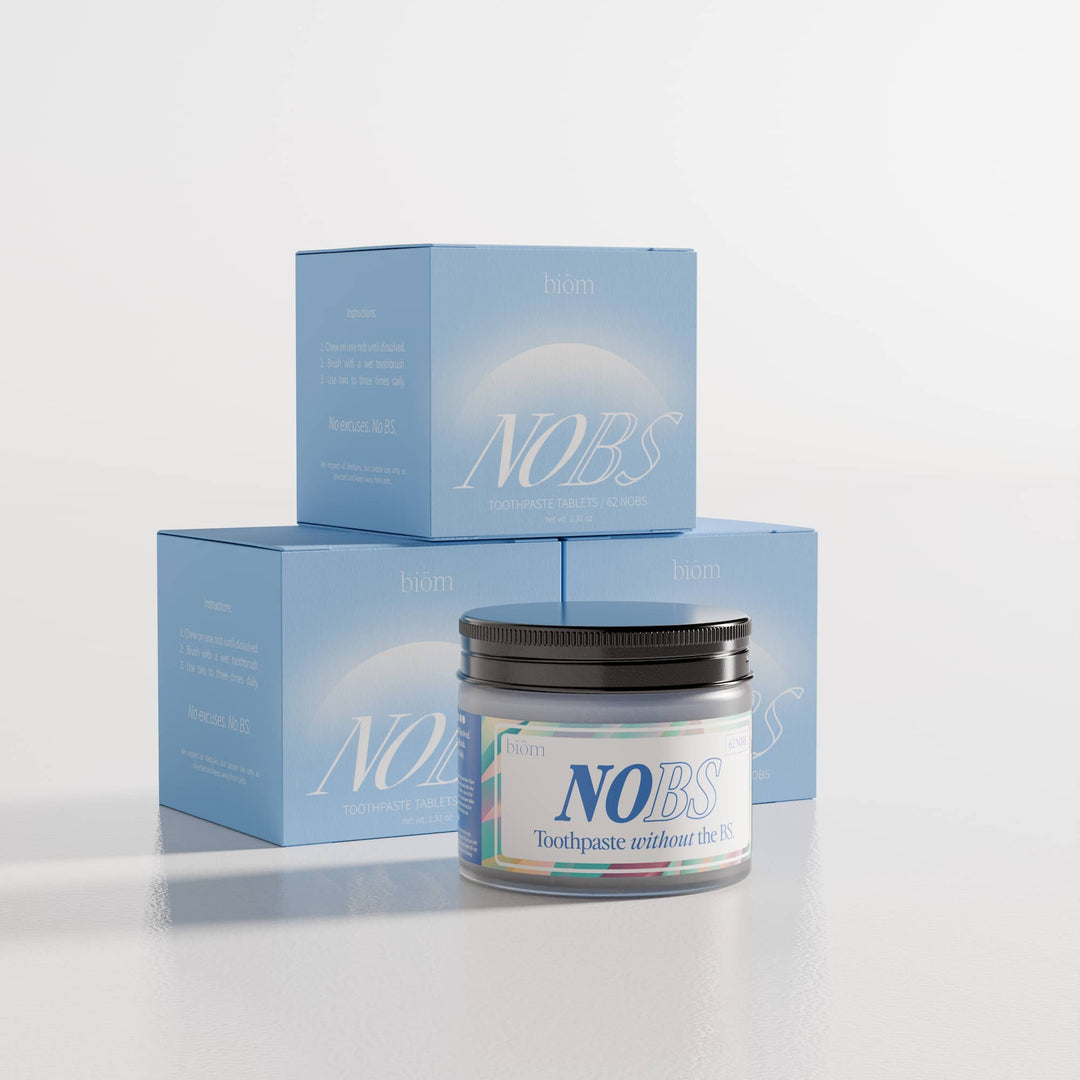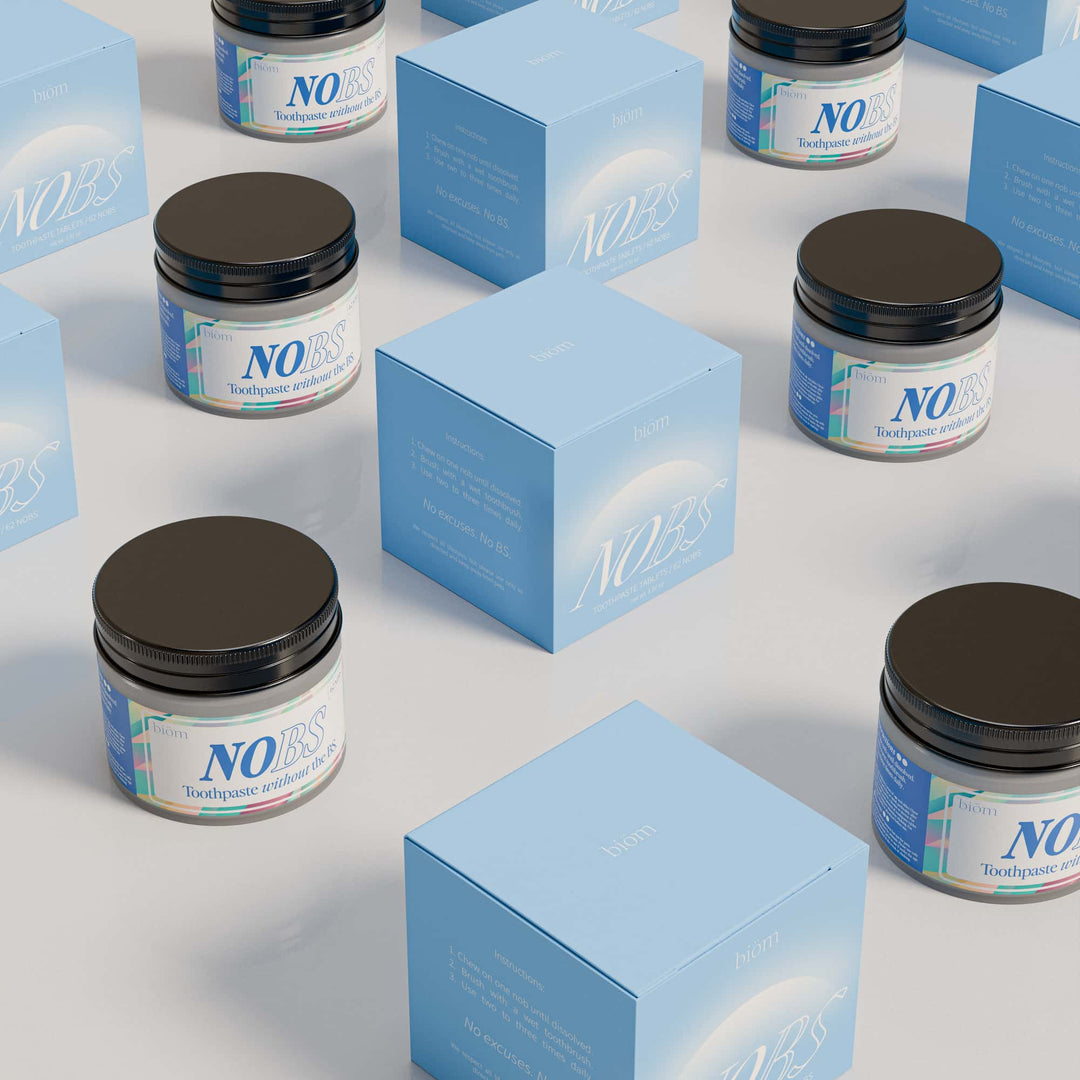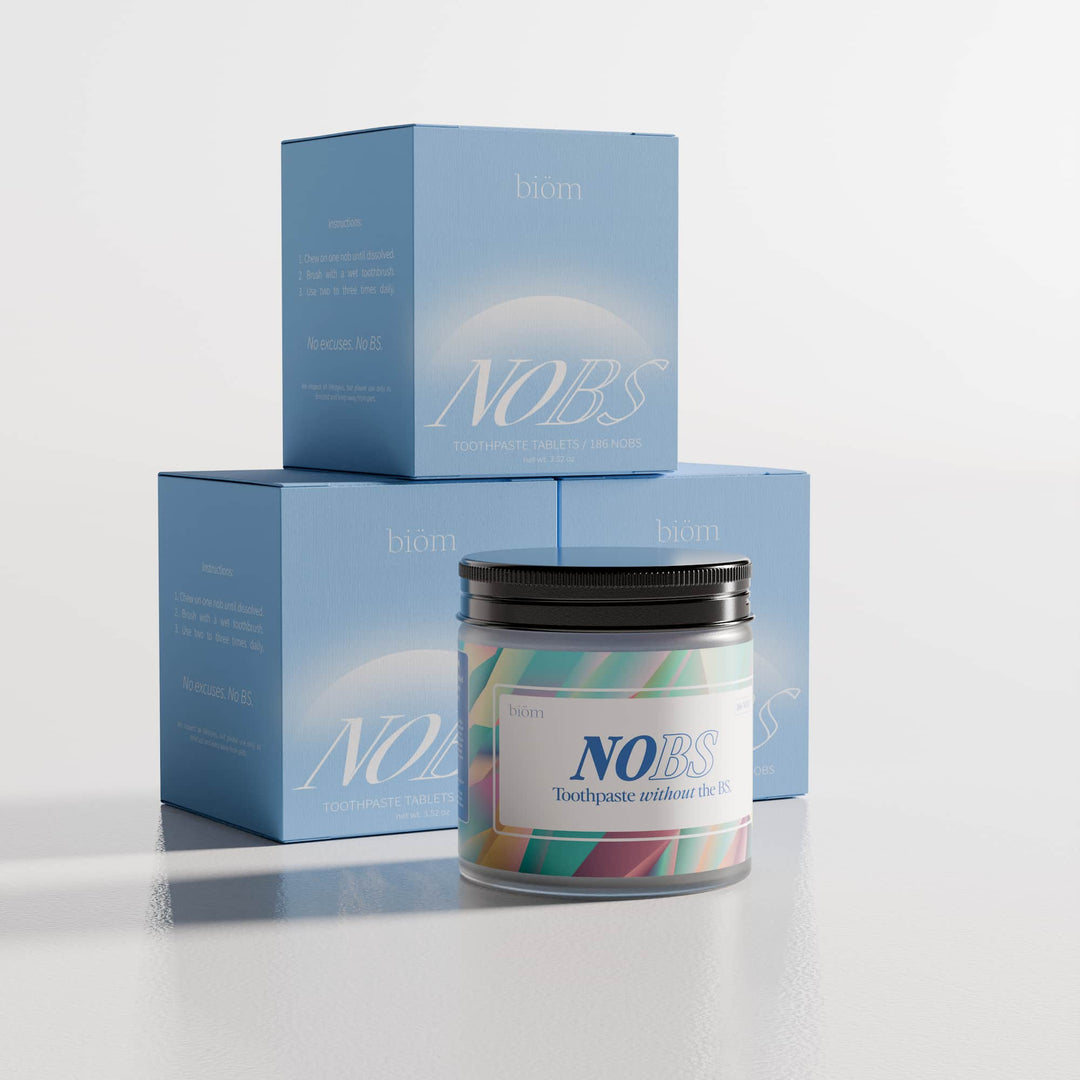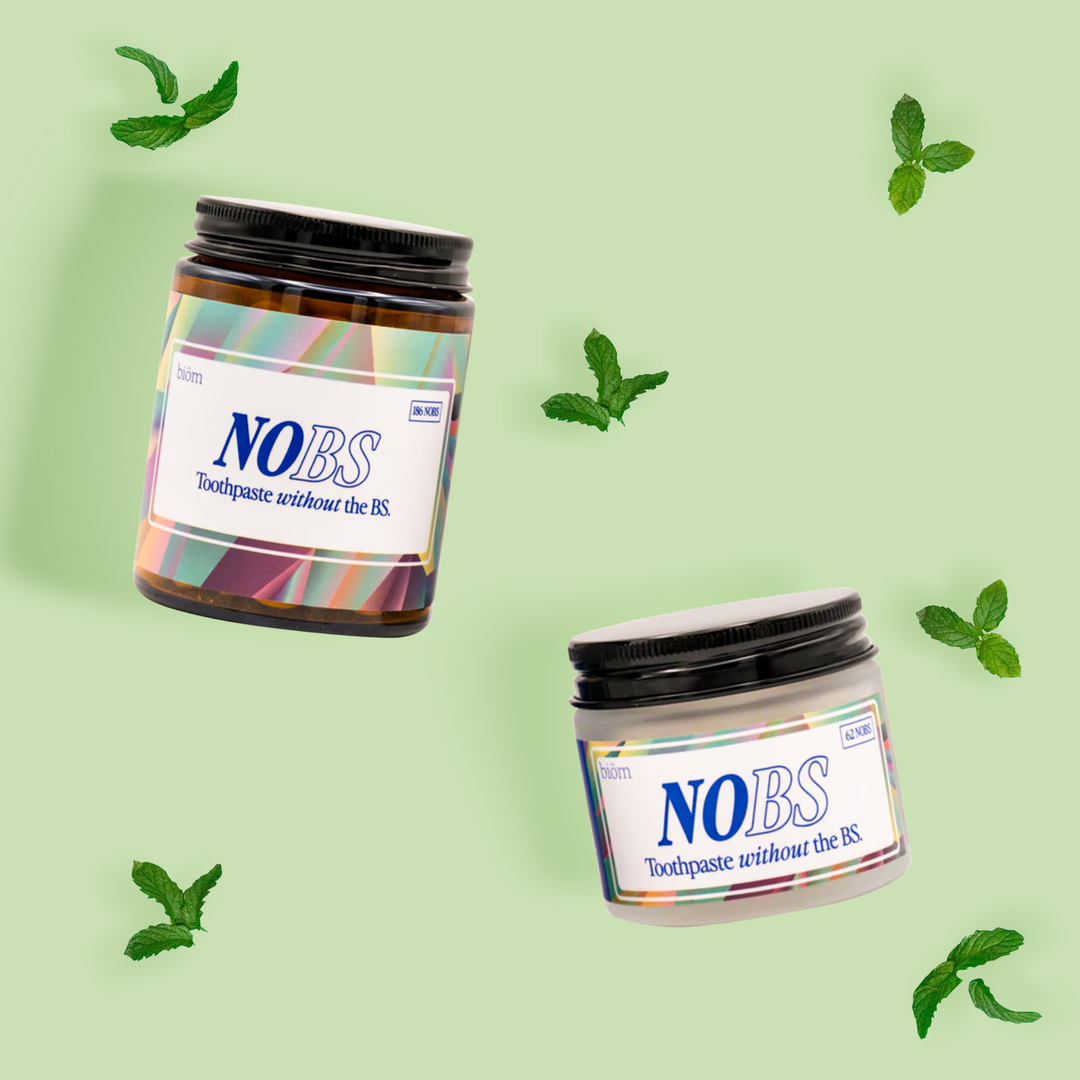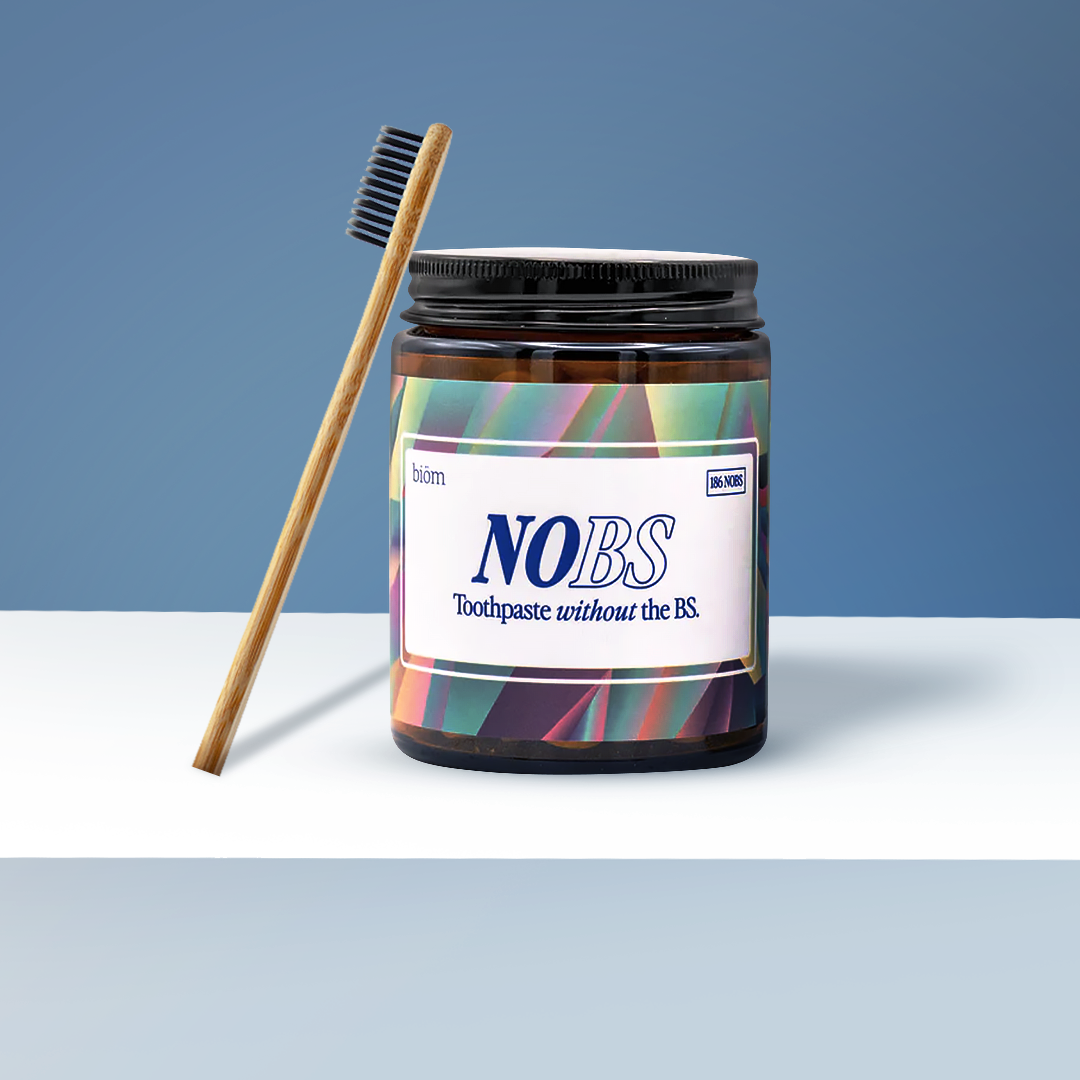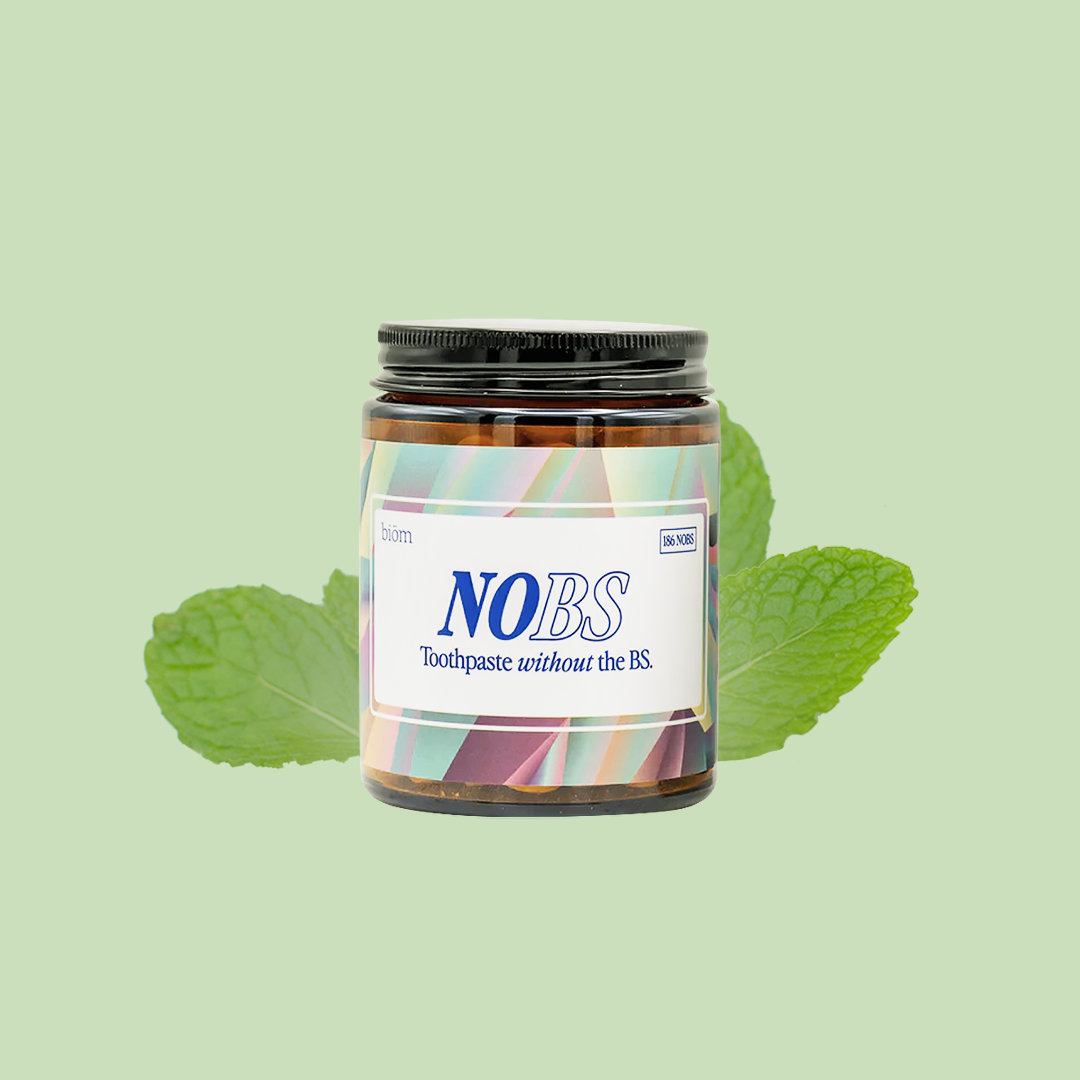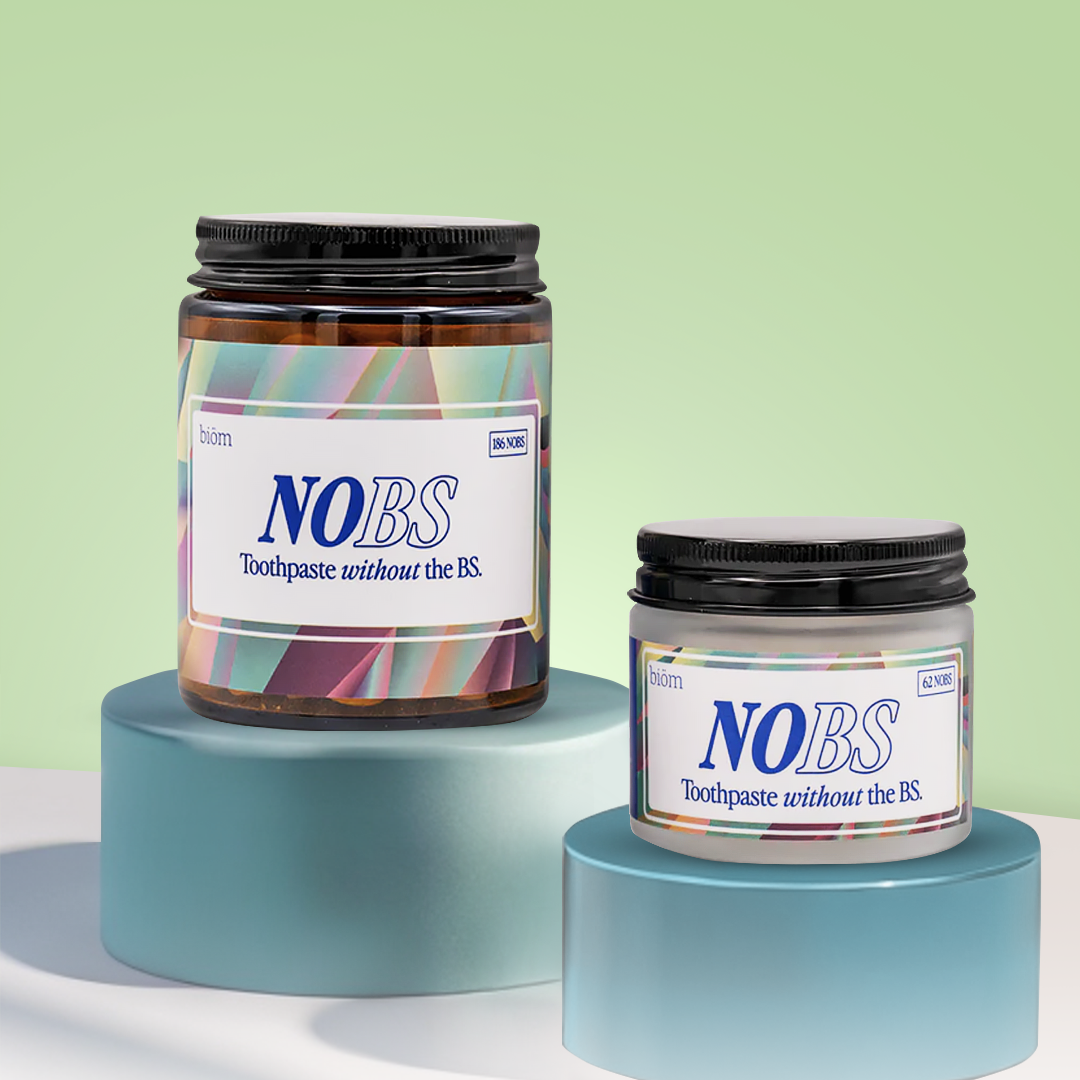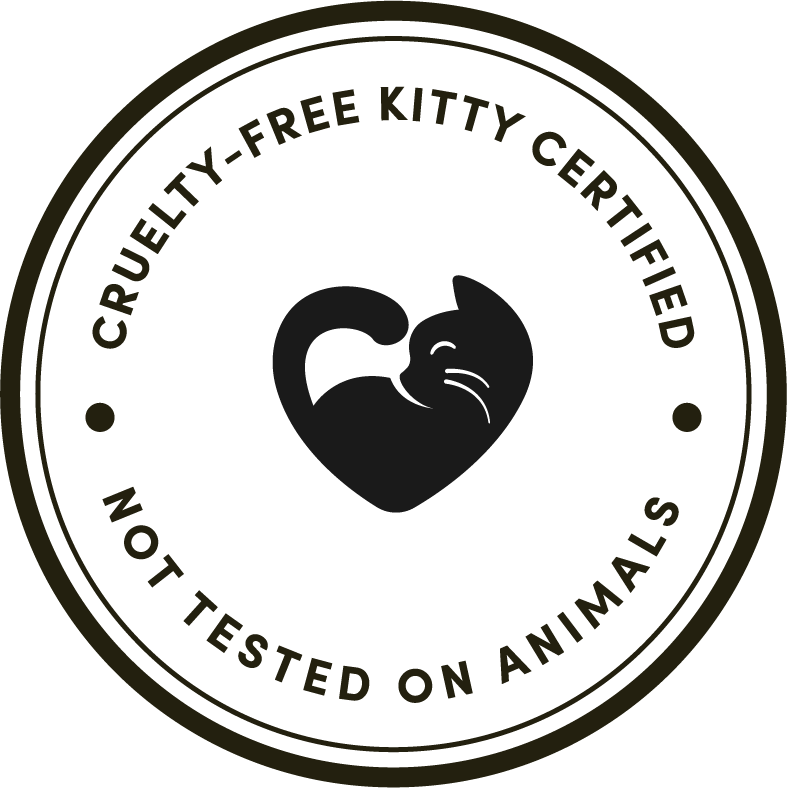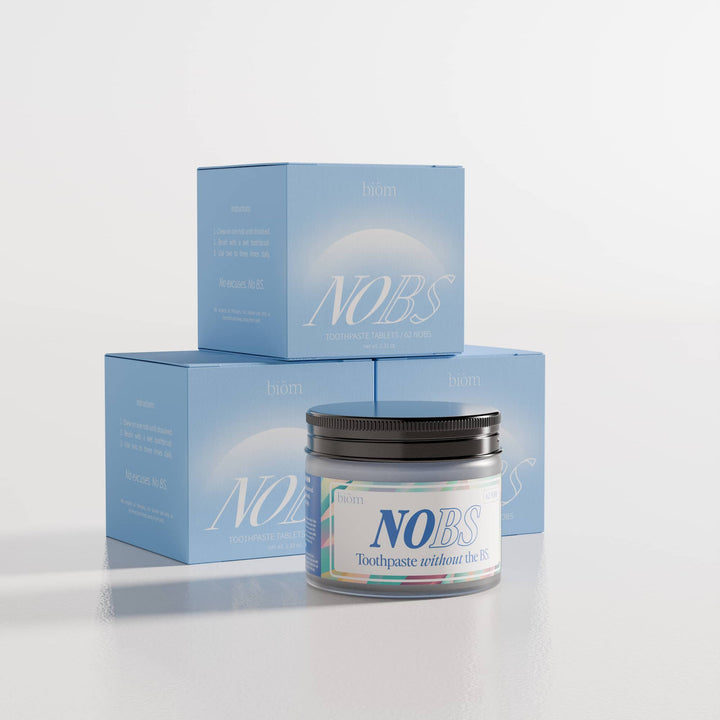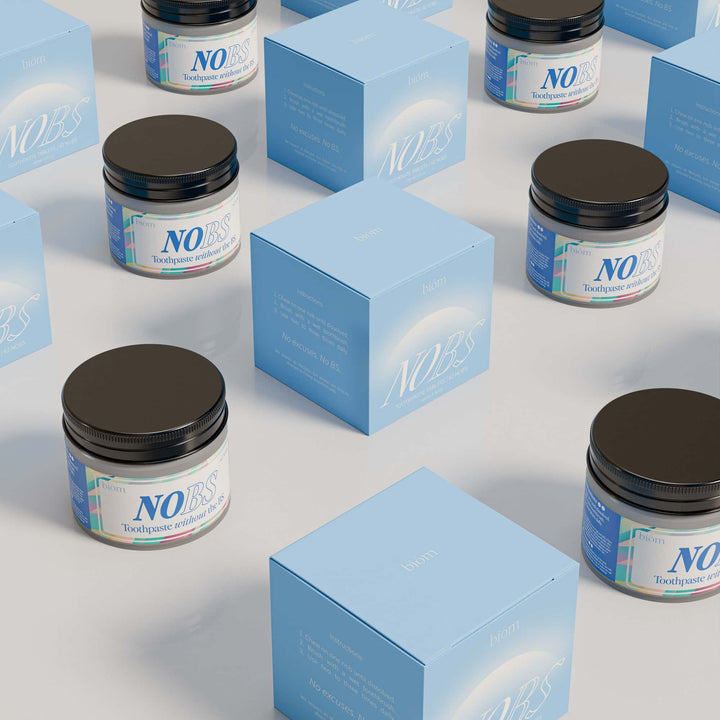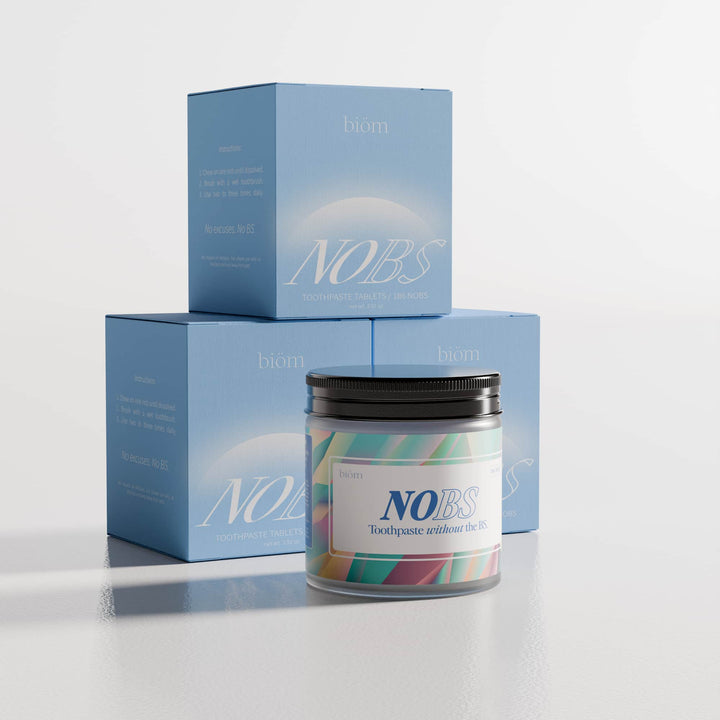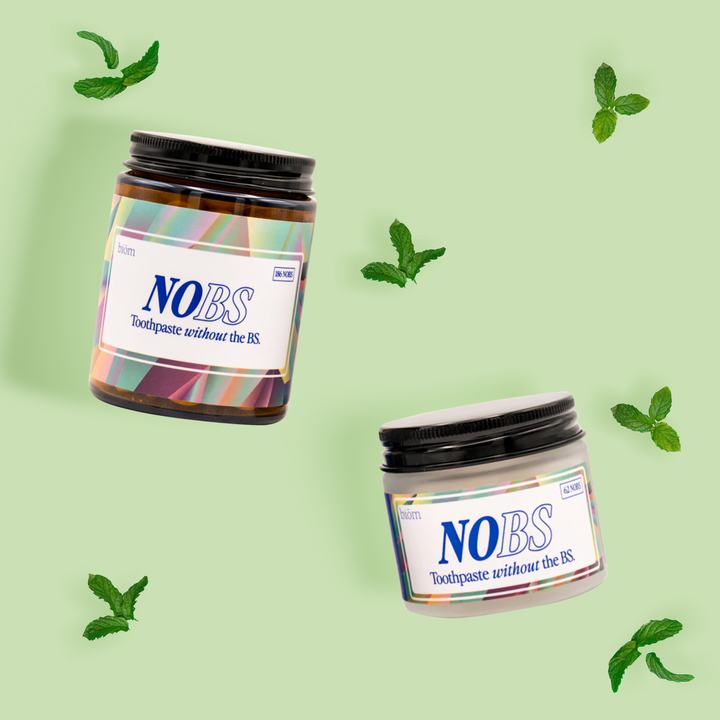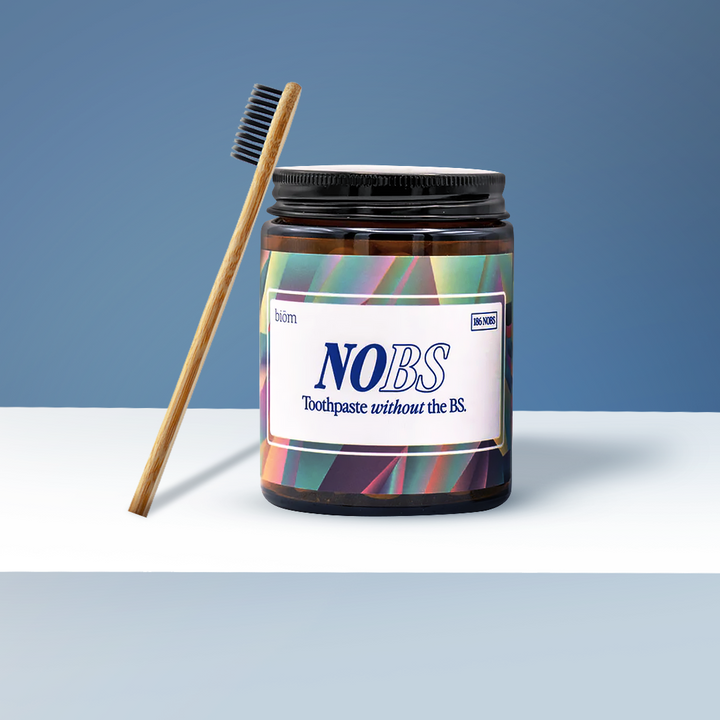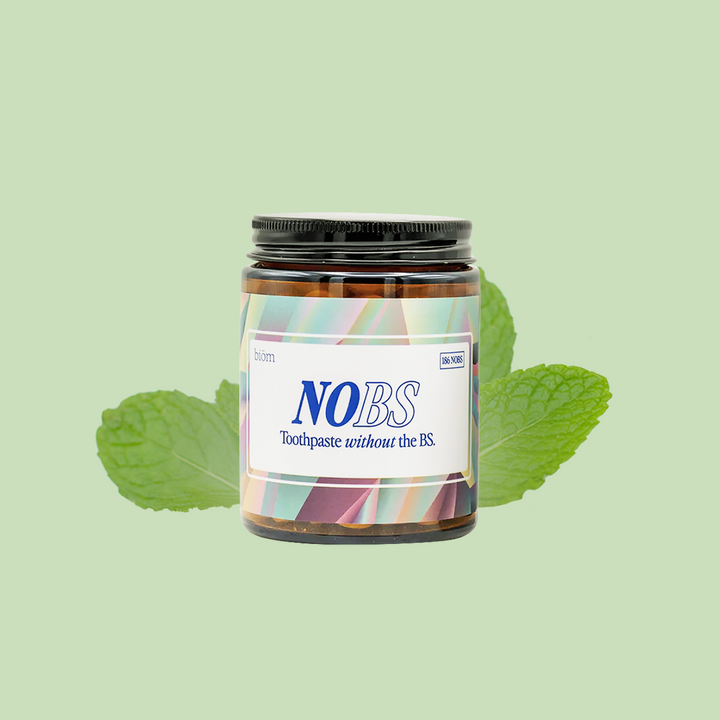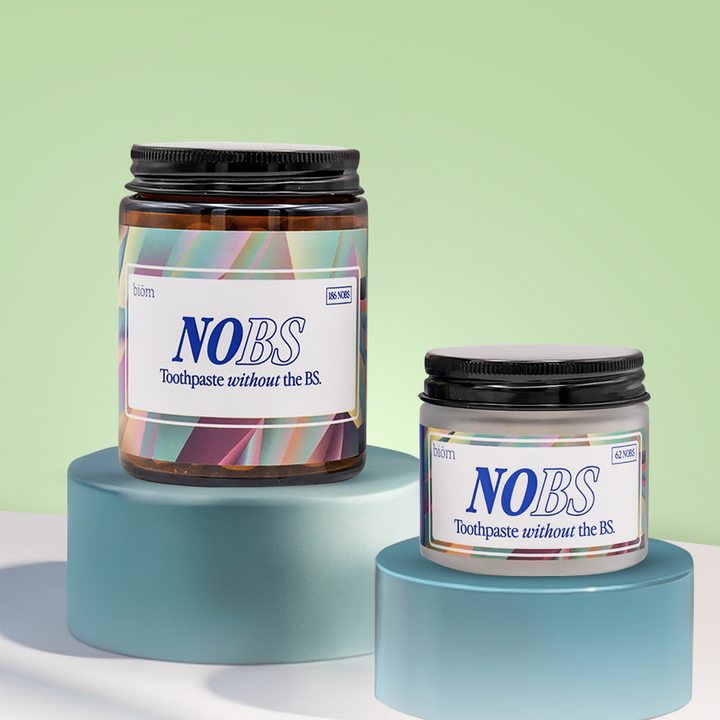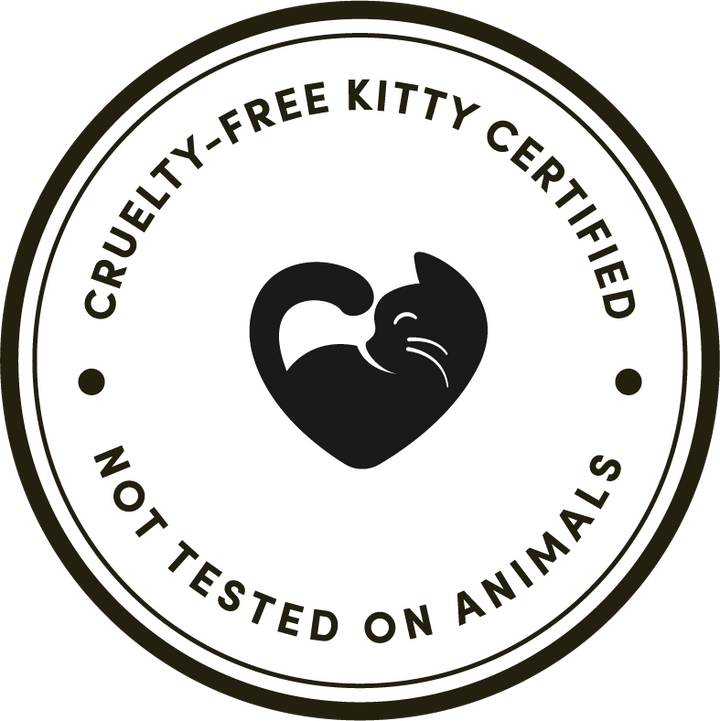What to Avoid in Toothpaste
Of all of the controversial toothpaste ingredients out there, fluoride, triclosan, and charcoal are three of the most common offenders. Some of the others include:
-
hydrogen peroxide
-
sodium lauryl sulfate (SLS)
-
bentonite clay
-
microbeads or polyethylene
-
carrageenan
-
and titanium dioxide.
While toothpaste is generally safe, by and large, these ingredients are controversial for their potential to induce toxicity or irritation to the sensitive tissues in your mouth. Thankfully, we have other safe ingredients that can replace this list, including nano hydroxyapatite which is a safe and effective alternative to fluoride.
In this article, I'll explain everything you need to know about what to avoid and what to look for in toothpaste.
Risky Ingredient #1: Sodium Fluoride

While fluoride is commonly used in toothpaste for its ability to prevent tooth decay and strengthen enamel, you may prefer fluoride-free alternatives due to concerns regarding potential adverse effects associated with fluoride exposure. For example, those with fluoride sensitivities or allergies may experience discomfort or irritation when using fluoride-containing toothpaste.
Additionally, excessive fluoride intake, particularly in young children who may swallow toothpaste, can increase the risk of dental fluorosis, a condition characterized by white or brown discoloration of the teeth. To mitigate these risks, parents and pregnant women may opt for fluoride-free toothpaste formulations to maintain good oral health without the potential drawbacks associated with fluoride exposure.
Thankfully, fluoride-free nano hydroxyapatite toothpaste exists as a safe and effective alternative to fluoridated toothpastes.
Nano hydroxapatite is an inorganic chemical compound that closely mimics that natural composition of our teeth and bones. Not only are hydroxyapatite-based toothpastes safe, but nano hydroxyapatite is equally as effective as fluoride at remineralization and improving oral hygiene.
Risky Ingredient #2: Charcoal

Did you know charcoal is an abrasive ingredient with the potential to damage tooth enamel and negatively affect your dental health?
Charcoal toothpaste contains finely ground particles of activated charcoal, which can be abrasive and harsh on tooth enamel when used regularly over time. One cause of tooth decay, continuous use of charcoal toothpaste may lead to enamel erosion, causing increased tooth sensitivity and making your teeth more susceptible to damage.
While activated charcoal is known for its ability to absorb toxins and stains, its abrasive nature may outweigh its benefits in the long run, especially if you have sensitive teeth or already weakened enamel.
Risky Ingredient #3: Triclosan

You might want to avoid triclosan in toothpaste due to concerns about its potential negative effects on both oral and overall health. Among some of the most controversial toxic toothpaste ingredients, triclosan is an antimicrobial agent commonly used in personal care products, including toothpaste, to prevent bacterial growth and maintain oral hygiene.
However, several studies have raised concerns about the safety of triclosan, including its potential contribution to antibiotic resistance and disruption of the body's hormonal balance.
Additionally, the American Dental Association (ADA) has stated that there is insufficient evidence to support the long-term safety and effectiveness of triclosan in toothpaste, leading to some skepticism regarding its use in oral care products.
Risky Ingredient #4: Hydrogen Peroxide

While hydrogen peroxide is safe to use every once in while through whitening strips, you might want to rethink using toothpaste with hydrogen peroxide due to its potential to cause oral irritation and sensitivity.
Hydrogen peroxide is commonly used in toothpaste for its whitening properties, as it can help remove surface stains and brighten teeth. However, hydrogen peroxide can also be harsh on the gums and oral tissues, leading to irritation, inflammation, and increased tooth sensitivity with prolonged use or at high concentrations.
Some individuals may experience discomfort or even allergic reactions when using toothpaste containing hydrogen peroxide, making it advisable to avoid such products if you have sensitive gums or a history of oral sensitivity.
Furthermore, long-term use of hydrogen peroxide can disrupt the balance of bacteria in the mouth, potentially leading to oral health issues such as gum disease or oral infections.
Risky Ingredient #5: Sodium Lauryl Sulfate (SLS)

A popular foaming agent alongside sodium dodecyl sulfate, sodium lauryl sulfate is another tricky ingredient to watch out for.
SLS is a surfactant commonly used in personal care products, including toothpaste, to create foam and aid in the distribution of ingredients. However, SLS can also strip away the protective layer of saliva on the gums, leading to dryness and irritation. Additionally, some individuals may experience allergic reactions or increased sensitivity to SLS, manifesting as mouth ulcers, canker sores, or a burning sensation in the mouth.
For those with sensitive gums or a history of oral sensitivity, avoiding toothpaste containing SLS can help minimize discomfort and maintain oral health without exacerbating existing issues.
As mentioned above, SLS has been linked to potential long-term oral health concerns, including an increased risk of developing recurrent aphthous ulcers (canker sores) and allergic reactions in some individuals.
While the American Dental Association (ADA) considers SLS to be safe for use in toothpaste, there is ongoing debate and research regarding its potential adverse effects on oral health. Therefore, individuals who are concerned about the potential risks associated with SLS may choose to opt for SLS free toothpaste formulations to ensure a safer, more gentle experience.
Risky Ingredient #6: Bentonite Clay

While bentonite clay is a common ingredient found in natural toothpaste, that doesn't mean it isn't one of the harmful ingredients you should avoid.
Bentonite clay is a naturally occurring substance known for its ability to absorb toxins and impurities, making it a popular ingredient in various skincare and oral care products. However, the presence of heavy metals in sources of bentonite clay has raised concerns about its safety, particularly when used in products intended for oral use.
While not all bentonite clay contains heavy metals, the risk of contamination exists, especially if the clay is sourced from areas with high levels of environmental pollution or industrial activity.
Additionally, there is limited scientific evidence supporting the efficacy of bentonite clay in toothpaste for oral health benefits. While some proponents claim that bentonite clay can help with preventing tooth decay, supporting healthy teeth, and detoxifying the mouth, these claims are not supported by robust clinical research.
As a result, we recommend that you choose to avoid toothpastes containing bentonite clay to minimize the potential exposure to heavy metals and ensure the safety of your oral care routine.
Risky Ingredient #7: Microbeads or Polyethylene

You might want to avoid microbeads or polyethylene in toothpaste due to concerns about their potential environmental impact and the risk of contamination with heavy metals.
Microbeads, often made of polyethylene or other plastic polymers, are used in some toothpaste formulations as abrasives or texturizing agents. However, these tiny plastic particles are non-biodegradable and can accumulate in the environment, posing a threat to aquatic ecosystems and wildlife.
Secondly, the abrasive nature of microbeads or polyethylene in toothpaste raises concerns about potential damage to tooth enamel and gum tissue. While these particles can help scrub away surface stains and plaque, they may also cause microscopic scratches on the enamel surface, leading to increased tooth sensitivity, enamel erosion, and gum irritation over time.
For all of these reasons, we recommend choosing plastic free toothpaste as a safe choice to keep your teeth healthy, avoid artificial dyes in plastics, and prevent any health risks.
Risky Ingredient #8: Carageenan

Avoiding carrageenan in toothpaste may be a good idea due to potential concerns regarding its safety and possible adverse effects on oral health.
Carrageenan is a common thickening agent derived from seaweed and is used in various food and personal care products, including toothpaste, to improve texture and consistency. However, some studies suggest that carrageenan may have inflammatory properties and could potentially contribute to gastrointestinal issues in sensitive individuals alongside other ingredients like artificial sweeteners.
While research on the safety of carrageenan in oral care products is limited, its potential for irritation or inflammation in the mouth raises questions about its suitability for use in toothpaste formulations.
Additionally, there is ongoing debate within the scientific community regarding the safety of carrageenan consumption and its possible association with digestive disorders. While regulatory agencies such as the U.S. Food and Drug Administration (FDA) have deemed carrageenan safe for use in food products at low levels, concerns persist about its potential to cause gastrointestinal inflammation and disrupt gut health.
Given the lack of conclusive evidence regarding the safety of carrageenan in toothpaste and the potential for adverse effects on oral and digestive health, we recommend opting for toothpaste formulations without carrageenan to minimize the risk of irritation and maintain optimal oral hygiene.
Risky Ingredient #9:
Titanium dioxide is a common additive used in various consumer products, including toothpaste, as a whitening agent and to provide opacity.
While titanium dioxide is generally regarded as safe for external use, there are concerns about its safety when ingested or exposed to mucous membranes, such as those in the mouth.
Some research suggests that titanium dioxide nanoparticles, which are used in many toothpaste formulations, may have the potential to penetrate the oral mucosa and enter systemic circulation, raising questions about their safety and potential long-term health effects.
Ingredients to Look For in Toothpaste

When considering toothpaste ingredients, it's helpful to look for the following categories:
-
Remineralizing Agents: Ingredients hydroxyapatite or nano hydroxyapatite can aid in remineralizing weakened enamel, repairing microscopic imperfections, and strengthening teeth against decay.
-
Abrasive Ingredients: Mild abrasives like hydrated silica, calcium carbonate, or baking soda can assist in removing surface stains and plaque buildup without damaging the enamel.
-
Antimicrobial Agents: Compounds such as zinc citrate can help inhibit the growth of harmful bacteria in the mouth, reducing plaque formation and the risk of gum irritation.
Let's explore some of these key ingredients.
Nano Hydroxyapatite
Nano hydroxyapatite (nHA) is a derivative of hydroxyapatite, a naturally occurring mineral that constitutes the main inorganic component of human teeth and bones.
Nano hydroxyapatite is frequently used as a remineralizing agent in zero fluoride toothpaste. When tooth enamel becomes demineralized due to acid erosion from plaque acids or dietary acids, nano hydroxyapatite can help restore minerals like calcium and phosphate to the enamel surface, effectively remineralizing and strengthening the teeth.
Additionally, nano hydroxyapatite can form a protective layer over the enamel, shielding it from further acid attacks and reversing tooth decay. In comparing nano hydroxyapatite vs hydroxyapatite, nano hydroxyapatite toothpastes tend to be more effective at remineralization and teeth whitening due to the smaller particle size.
It offers a natural alternative to fluoride toothpaste while providing similar benefits in terms of enamel remineralization and cavity prevention. Its biocompatible nature and minimal side effects make it a popular choice among those with sensitivities to fluoride or those looking for safer alternatives in oral care.
Xylitol
Xylitol, a sugar alcohol derived from natural sources like fruits and vegetables, is a near-magical ingredient in oral care. Renowned for its cavity-fighting properties, xylitol effectively disrupts the growth of harmful bacteria, particularly Streptococcus mutans, responsible for dental plaque formation and decay. By impeding bacterial growth, xylitol helps stop the progression of cavities and promotes overall oral health.
Moreover, xylitol toothpaste facilitates the remineralization process by enhancing the absorption of essential minerals like calcium and phosphate into tooth enamel. This fortifies the enamel structure, making teeth more resilient to acid attacks and enamel erosion, thus reducing the likelihood of cavities.
In addition to its anti-cavity prowess, xylitol plays a pivotal role in maintaining a balanced oral environment by curbing acid production and stimulating saliva flow. Its natural sweet taste not only enhances the palatability of toothpaste but also encourages saliva secretion upon consumption.
Consequently, xylitol's multifaceted dental benefits make it a perfect ingredient in your everyday toothpaste.
Zinc Citrate
Zinc citrate is a compound commonly included in toothpaste due to its various dental health benefits. One primary function of zinc citrate is its ability to inhibit the formation of dental plaque, which is a sticky biofilm comprised of bacteria that can lead to gum disease and tooth decay.
By hindering the adhesion of bacteria to the tooth surface, zinc citrate helps prevent the buildup of plaque, reducing the risk of oral health issues. Additionally, zinc citrate possesses anti-inflammatory properties that can help soothe gum irritation and promote gum health, contributing to overall oral well-being.
Furthermore, zinc citrate is often included in toothpaste formulations for its odor-neutralizing effects. It can help combat bad breath by targeting the sulfur compounds produced by oral bacteria, which are often responsible for malodor.
Sodium Bicarbonate
Sodium bicarbonate, commonly known as baking soda, is used toothpaste for its multi-functional properties, One of its primary functions is its abrasive properties, which help remove surface stains and plaque buildup from the teeth. Its mild abrasiveness aids in polishing the enamel without causing excessive damage, unlike stronger abrasives like charcoal.
Additionally, sodium bicarbonate acts as a natural deodorizer, effectively neutralizing odors and freshening breath by combating the volatile sulfur compounds produced by oral bacteria. This dual action of cleansing and deodorizing contributes to improved oral hygiene and a fresher mouth.
Further, sodium bicarbonate possesses alkaline properties that help balance the pH level in the mouth. Maintaining a balanced pH is crucial for dental health as acidic conditions can contribute to enamel erosion and tooth decay.
By neutralizing acids and promoting a more alkaline environment, sodium bicarbonate helps protect the teeth from acid-related damage and supports remineralization, the process by which lost minerals are restored to the enamel.
And f you're wondering is toothpaste vegan, these ingredients are a good starting point for understanding what to look for in a vegan-friendly toothpaste.
Frequently Asked Questions
What are the most harmful chemicals in toothpaste?
Some of the most harmful chemicals in toothpaste include sodium fluoride, triclosan, hydrogen peroxide, sodium lauryl sulfate (SLS), and charcoal. These ingredients have been associated with various adverse effects such as dental fluorosis, antibiotic resistance, oral irritation, and enamel erosion.
What type of toothpaste to avoid?
Due to the concern of toxicity and other various adverse effects, you may want to avoid toothpaste containing ingredients like sodium fluoride, triclosan, hydrogen peroxide, sodium lauryl sulfate (SLS), and charcoal.
What is the safest toothpaste to use?
NOBS Toothpaste Tablets is the safest toothpaste to use. Not only are they fluoride-free and plastic-free, but they contain amazing ingredients like nano hydroxyapatite for remineralization, xylitol to fight tooth decay, zinc citrate to fight plaque, and sodium bicarbonate to gently polish teeth.



